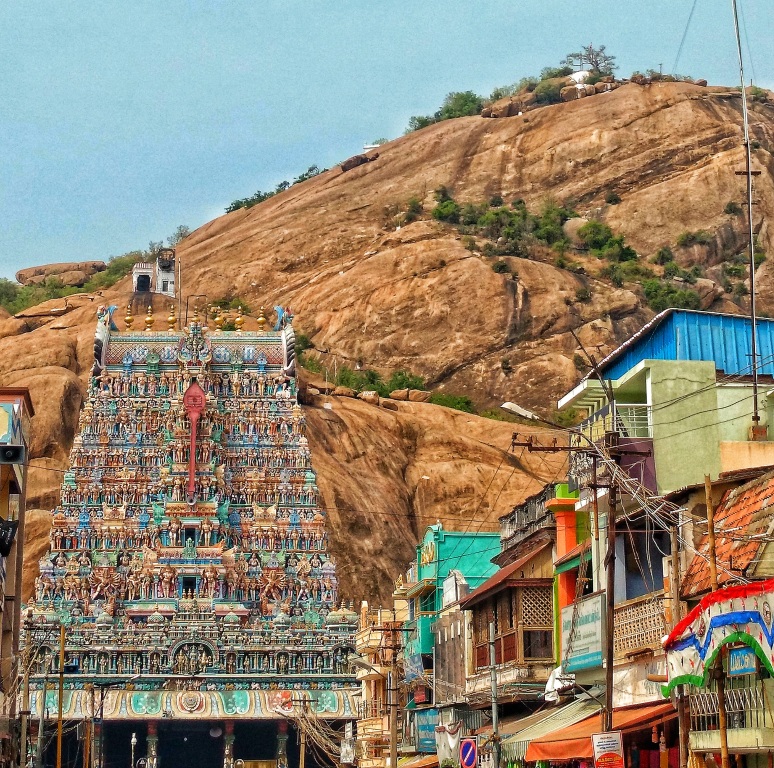Sri Deivanai Sametha Subramania Swamy Temple, Thiruparankundram

Address
Sri Deivanai Sametha Subramania Swamy Temple, Thiruparankundram, Madurai, Tamil Nadu, INDIA 625 005 Telephone: 0452-2484359 , 0452-2482248
Deity
Subramania Swamy
Introduction
- Location: Thiruparankundram, 8 km from Madurai, Tamil Nadu, India.
- Significance: One of the Six Abodes of Murugan (Arupadaiveedugal). Built in rock-cut architecture, believed to have been constructed by the Pandyas in the 6th century.
- Deities: The main shrine houses Murugan, with additional deities of Shiva, Vishnu, Vinayaka, and Durga. The temple follows the Shaivite tradition of worship.
- Administration: Maintained by the Hindu Religious and Endowment Board of the Government of Tamil Nadu.
Puranic Significance:
- Historical Roots: The temple is carved out of a hill and may have originally been a Jain cave, later converted into a Hindu temple.
- Legend of Surapadma: The demon king Surapadma, who had gained immense power through penance, captured all worlds and oppressed the Devas. Murugan, born from the divine sparks from Shiva’s third eye, was sent to defeat him. After a fierce battle, Murugan killed Surapadma, who transformed into a mango tree. Murugan split the tree into pieces that became his vahana (peacock) and his banner (rooster).
- Divine Marriage: The temple is also the site where Murugan married Deivayanai, the daughter of Indra, the king of Devas. Murugan is believed to have worshipped Shiva here as Parangirinathar.
- Kanthar Anoobothi: This text records the divine marriage and Murugan’s command to the gods and angels to return to heaven in their own vehicles.
Beliefs:
- White Peacocks: White peacocks are believed to be manifestations of gods and sages who lived in this area to witness Lord Murugan.
Special Features:
- Architecture: The temple features rock-cut architecture from the Pandya period (6th century) with later additions from the Nayaka period (16th century). It includes:
- Rajagopuram: A seven-tiered tower, 150 feet (46 meters) high, at the entrance.
- Mandapas: The Aasthaana Mandapa, Ardha Mandapam, and Mahamandapam, leading to the sanctum, are at varying elevations.
- Sanctum: The early rock-cut temple has cells for Subramanya, Durga, Vinayakar, Shiva, and Vishnu, with carvings on the rock walls. The presiding deity, Shiva, is known as Parangirinathar, and his consort, Parvathi, as Aavudai Nayaki.
- Granite Hill: A granite hill (1,050 ft / 320 m) behind the temple has a shrine dedicated to Kasi Viswanatha.
- Vinayaka Statue: The image of Vinayaka in the temple holds sugarcane and fruits.
Festivals:
- Skanda Shashti: Celebrated in the Tamil month of Aippasi (October–November), commemorating Murugan’s victory over Surapadma with processions and enactments.
- Brahmotsavam: Held in the Tamil month of Panguni, featuring processions of Vishnu and Muruga to Madurai for the Chittirai festival.
- Karthigai Deepam: Celebrated in the Tamil month of Karthigai with a lamp lit on the hilltop.
- Vaikasi Visakam and Thai Float Festival: Celebrated with processions and rituals.
- Vaikunta Ekadashi: Observed due to the presence of Vishnu in the temple.
Thiruparankundram Murugan Temple is a significant religious site, renowned for its historical, architectural, and devotional importance.
Century/Period/Age
1000-2000 years
Managed By
HRCE
Nearest Bus Station
Thiruparankundram
Nearest Railway Station
Thiruparankundram
Nearest Airport
Madurai




